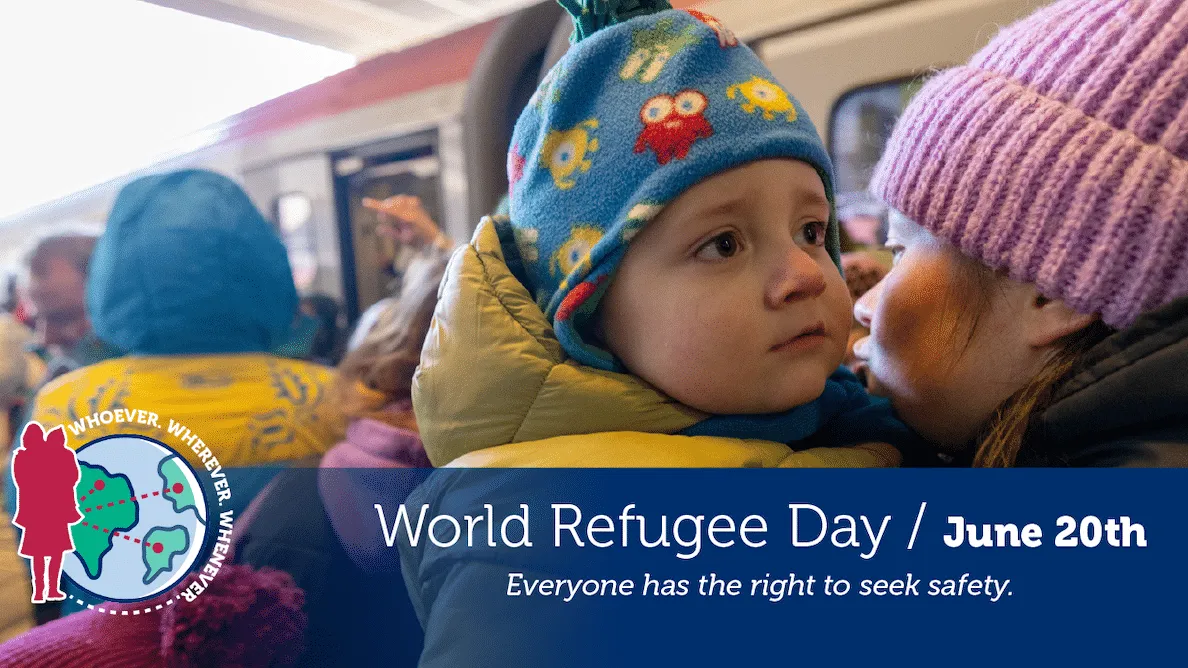On the Ground: The Enduring Strength of Ukraine’s Refugees
On World Refugee Day, Project HOPE honors the strength and courage of the 20 million refugees who have sought safety around the world — including the women and children who have fled Ukraine.

June 20 is World Refugee Day — a day to honor the courage and sacrifice of refugees around the world. There are more than 100 million people displaced around the world right now, including 20 million refugees. Everyone deserves the right to safety: Whoever. Wherever. Whenever. Project HOPE is working to help displaced communities access care in Ethiopia, Colombia, Ukraine, and beyond. Click here to learn more about how we’re responding in Ukraine and how you can help.
In March, I traveled to Romania and Poland to meet with my staff and Project HOPE’s partners who are working on our emergency response in Ukraine. I’ve been working on the Ukraine response since day one, but this was my first time on the ground.
I usually spend my days glued to my laptop, on video calls with our teams, acting as the funnel between headquarters and the field. Being on the ground gave me a completely different perspective. It reminded me that each of the millions who have crossed the border are individuals who had experienced significant trauma and upheaval.
In Poland, I visited the border crossing between Ukraine and Medyka, one of the many border crossings where more than 3 million refugees have entered Ukraine since the violence erupted in February. When I stepped out of the car, the immediate confusion and despair of the border crossing welcomed us. Entry into Poland is a muddy corridor lined with tents, offering meals and first aid to the mostly women and children refugees trudging through what is likely just the mid-point of their journey. Taxis queued up the street in a parking lot of a packed but fully-stocked grocery store. Portable toilets, haphazardly placed, sat across from casual restaurants closed for the weekend. Grandmothers rushed their children into the toilets, a small reminder that even in an emergency, basic human needs do not rest.

The flow of refugees into Poland was a trickle; the paperwork process often leaves an extensive line on the Ukrainian side. A green chain link fence lined the walkway from Ukraine into Poland, and every minute or so, another family — maybe a mother and a child, or an elderly couple — would slowly walk with their bags under the gray sky. The details of their stories varied, but the motivation for leaving was the same: they sought safety in a country outside their own.
Medyka is one of the many border crossings available to Ukrainians fleeing the Russian offensive, and its border crossing has been declared “organized chaos,” though I wouldn’t describe the chaos as organized. A food truck advertising Indian dishes sat closed in the rain. A sign in Russian read, “Work for Cash,” with a phone number and no further information. A Kentuckian named Ben, dressed in a large pink bunny suit, was the first sight Ukrainians laid eyes on as they followed the white arrows into the humanitarian village, a small moment of comfort for the countless children whose lives had been upended.
The people leaving Ukraine are undoubtedly frightened and distressed, but even with the difficulties they’ve encountered and the trauma they’ve seen, they also cross with resolve to return within a few weeks’ time. Very few Ukrainians do not plan to repatriate.



As the conflict has concentrated in eastern Ukraine, many refugees have returned home. I think about these families often, as I’d spent significant time with Ukrainian women housed in Polish and Romanian shelters. The shelters were communal, and children played together while their mothers spoke quietly with one another or helped prepare the daily midday meal. Through our translators, who were also refugees, I asked these women what their long-term plans were. They all repeated the same refrain: “We will return in a couple of weeks,” despite the photographs and videos of destruction they shared with me on their phones.
One of these young Ukrainian women we met was working in the shelter we visited in Constanta, Romania. Despite her own traumatic experience fleeing across the border, where she had left her parents who had been unable to travel, she had dedicated her time in Romania to supporting the community of women and children that had settled in the shelter. She told us her story, wiping tears from her face before returning to work. Her resiliency — and the resiliency of those around her — spoke volumes of the Ukrainian people, who were unwilling to lose faith in their country despite the destruction of the Russian offensive.


I returned to the States a few days after seeing Medyka, but the words of the Ukrainians I spoke to remain with me. We must help them rebuild — their schools, their hospitals, their cities — so that they can resume their lives. We have to provide the support to help them heal. And although we in the humanitarian sphere recognize that Ukraine is not yet at the recovery stage of this conflict, the Ukrainians themselves already have an eye toward a brighter future. I saw it in every Ukrainian we met — from the adults to the children — the strength and the determination of the community to remain together, and to return to a stronger Ukraine.
On World Refugee Day, we at Project HOPE honor the bravery, will, and spirit of every displaced person, from Somalia and Syria to Afghanistan and South Sudan, and we stand with these communities in their fight to endure and overcome.
Chessa Latifi is a senior program advisor at Project HOPE.







